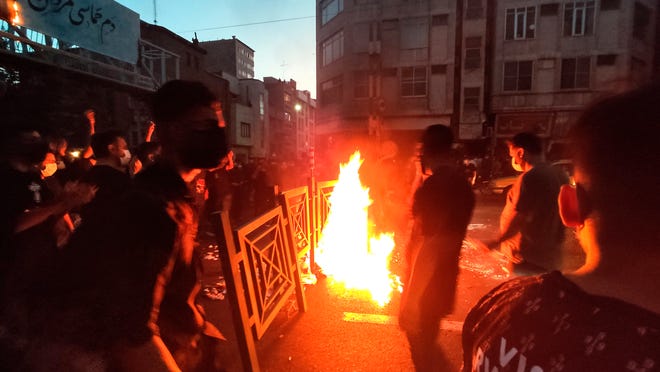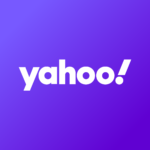The death of a 22-year-old woman in the custody of Iran’s “morality police” for allegedly not properly covering her hair has sparked a remarkable moment of defiance by Iranian women and men, experts say.
Thousands of protesters have taken to the streets to demand justice for Mahsa Amini across the country. Women have burned their scarves and cut their hair, protesters have been injured and arrested, and as man as 17 people have been killed. Despite the violent crackdown from Iranian security forces, demonstrations have continued in at least 13 cities for days.
Iran has dealt with multiple waves of protest, but the recent demonstrations over the Amini’s death are unique, said Tara Sepehri Far, a senior researcher in the Middle East and North Africa division at Human Rights Watch.
Many have come to see Amini’s death as symbolic of the country’s heavy-handed response to dissent, the laws restricting women’s rights and the morality police’s increasingly violent treatment of young women.
While burning of the hijab is not unprecedented, the intense outcry across the country is seemingly a remarkable moment of defiance by women seeking to gain more autonomy, Sepehri Far told USA TODAY.
“Them doing it collectively as an act of defiance, it has forever moved the debate forward,” she said. “For brief moments, the city experienced defiance of women without hijab, the imagination that was once impossible for many people became reality.”
WHAT TO KNOW:How will Iran respond next to protests over Mahsa Amini’s death?
MAHSA AMINI’S DEATH:Protesters take to the streets as security forces crack down
Amini died three days after being detained Sept. 13 after being accused of violating the country’s dress codes by not properly covering her hair with a headscarf or hijab. She collapsed at a detention center, fell into a coma and died three days later, the United Nations said in a statement.
Police said she died of a heart attack, but her family has accused authorities of lying, sparking public skepticism over the cause of her death.
In a statement, Nada Al-Nashif, the acting United Nations High Commissioner for Human Rights, expressed alarm over her death as well as the “allegations of torture and ill treatment,” and “the violent response” to protests.
“The authorities must stop targeting, harassing and detaining women who do not abide by the hijab rules,” she said.
The widespread participation of men has also set the protests apart, she said.
“This is probably the first time in recent memory that people have come to street in masses in demand of a very clear issue of women’s rights,” Sepehri Far said.”… the public understands this issue is not an isolated incident.”
Support for mandatory hijab declines as protest emerge
Iran has a long history of trying to mandate what women can wear, said Firoozeh Kashani-Sabet, a professor of modern Middle Eastern history at the University of Pennsylvania.
In the early 20th century, U.S.-backed Shah Mohammad Reza Pahlavi banned the hijab and all kinds of Islamic veils, a decree that was met with resistance and led to discrimination against women who chose to remain veiled, she said.
Shortly after Ayatollah Ruhollah Khomeini took power during the 1979 Iranian revolution, the hijab became mandatory and the morality police were tasked with enforcing that and other restrictions. Women’s rights can often become a government’s target, especially in moments of distress, she said.
“Trying to wield authority over women in particular, unfortunately, can sometimes become a way of expressing power,” Kashani-Sabet said.
Sepehri Far said the mandatory hijab is more than just a dress code — it impacts “every aspect of a woman’s life” including their education, employment and ability to run for office.
INSIDE IRAN:Most women must live as second-class citizens, but some are making strides
There have been several waves of protests in recent years against the mandatory hijab, including the “White Wednesday” and “My Stealthy Freedom” campaigns launched by activist Masih Alinejad, which encouraged women to post images and videos of themselves without headscarves on social media.
In 2017, dozens of women removed their headscarves in protest. Many were later arrested while protesting the law as a social-media campaign gained steam online.
About half of Iranians in 2014 said they believed the government should not be allowed to dictate what women wear, according to a study recently published by the Center for Strategic Studies, part of the Iranian president’s office.
“The criticism against this policy is increasing by day, and I think the support is very visibly diminishing, even according to government statements and stats,” Sepehri Far said.
It’s important to acknowledge that not everyone is against wearing hijab, but Kashani-Sabet said, “it’s high time that women are given options, women are given the freedom of choice in matters of dress.”
Many Muslim women choose to wear the hijab for religious and personal reasons and have foughtagainstbeing forced to remove them,particularly in Western countries. About 4 in 10 Muslim women in America said they always wear hijab in public, a percentage which has remained steady over the past decade, according to a study from Pew Research Center in 2017.
What is the ‘morality police’?
The morality police have existed in some form for at least 20 years, but in 2019 they reorganized and began to use “re-education centers,” said Hadi Ghaemi, executive director of the New York-based Center for Human Rights in Iran.
“They take a woman there and treat them like criminals by taking mugshots and making a record of them, contacting the male member of their family … and then they give them about a one hour course supposedly on how to wear a proper hijab,” Ghaemi said. “At the end of the day, it’s mass surveillance of woman in public space.”
Ghaemi said it is “extremely common” for women, and sometimes men, to be stopped and questioned by the morality police even if they are not taken to the re-education centers. What is considered “improperly” wearing hijab can be arbitrary, he added.
In Tehran, where Amini was visiting family, police have said they would stop arresting women they deemed have breached Islamic values and adopt this more educational approach. But Sepehri Far said calling the detention centers “re-education centers” is a rhetorical attempt to reduce friction between the public and the people, not a true loosening of restrictions.
She said the morality or guidance police have been trying to use private businesses and traffic cameras to find women not properly wearing hijab. The United Nations human rights office said in a statement on Amini’s death that the police had stepped up patrols and have been recorded slapping, beating and shoving women into police vehicles.
Sepehri Far said punishments can range from a fine to up to two months of detention.
“It’s still very much a law enforcement-led initiative because you are arrested and detained,” she said. “It’s not uncommon to talk to women who have experienced this multiple times.”
Kashani-Sabet, from the University of Pennsylvania, said its unclear how many people work for the morality police and how many young women are subject to arrests and violence.
“Part of what makes it effective is just this belief that they’re omnipresent, omniscient, omnipresent, and they have this extraordinary power,” she said.
‘No one forced me to dress this way’:Hijab becomes symbol of resistance, feminism in the age of Trump
Protests over Amini’s death ‘changed the equation’
Part of what makes the protests in the wake of Amini’s death different is the widespread participation of men, both Sepehri Far and Ghaemi said.
It’s also significant that protests are occurring in the country’s capital of Tehran, which has not seen such widespread demonstrations since economic unrest in 2009, Sepehri Far said.
Security forces have responded to the mostly peaceful protests with unlawful use of metal pellets, tear gas, water cannons, and beatings with batons, according to Amnesty International.
Hundreds have been injured, and an anchor on Iran’s state television suggested the death toll from the mass protests could be as high as 17 on Thursday, but did not say how he reached that figure.

The U.S. government imposed sanctions on the morality police and leaders of other Iranian security forces, saying they “routinely employ violence to suppress peaceful protesters.” Treasury Secretary Janet Yellen called on the Iranian government “to end its violence against women and its ongoing violent crackdown on free expression and assembly.”
There was also near-total disruption of internet access Monday in parts of the Kurdistan province in western Iran and regional blackouts elsewhere, including Tehran, according to internet watchdog Netblocks. Access to Instagram and WhatsApp have been restricted across the country as well as a “nation-scale shutdown of mobile networks,” which will likely make it more difficult for people to organize protest and share information, the organization said.
INSIDE IRAN’S RESPONSE: What’s next for protesters?
CNN’s chief international anchor Christiane Amanpour, who is British-Iranian, saidshe had planned to ask Iranian President Ebrahim Raisi about the protests in what would have been his first U.S.-based interview, but Raisi did not show up after she refused to wear a headscarf.
Sepehri Far and Ghaemi expressed concern that the crackdown could get worse. Even if the government does not adhere to the protesters’ demands, the experts said the domestic pressure has already made an impact on the conversation around women’s rights.
“They have changed the equation,” Ghaemi said. “The Islamic Republic is very much on the defense.”
Contributing: The Associated Press
Contact Breaking News Reporter N’dea Yancey-Bragg at nyanceybra@gannett.com or follow her on Twitter @NdeaYanceyBragg





